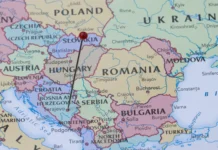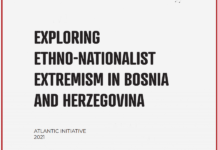The Netherlands became the first NATO ally to pull combat troops out of Afghanistan on August 1 this year. Dutch troops had been deployed in southern Afghanistan’s Uruzgan province, before they handed over their mission to U.S., Australian, Slovakian and Singaporean forces.
The Netherlands will leave only 60 military personnel in Afghanistan.
They will work in the international headquarters in Kabul and will
not be engaged in combat operations.
Before the pullout, the Dutch had nearly 2,000 troops in the
International Security Assistance Force (ISAF) in Afghanistan. Out of
that number, 1,500 were in Uruzgan, 400 in Kandahar and 100 in Kabul.
The Afghanistan Government praised the Dutch troops for their
exceptional work in the process of establishing security and helping
the reconstruction of the province. It also expressed regrets for the
loss of lives of the Dutch soldiers over the past four years, which
saw 24 soldiers killed and 140 wounded.
The pullout took place after the Dutch Government had failed to
convince the opposition in the Parliament to extend its mission for
another two years, as the US had requested. This triggered a
political row which brought down the country’s coalition government in
February.
The Dutch military chief in Afghanistan, Gen Peter van Uhm, said
recently that security had improved in Uruzgan province during the
Dutch deployment, but he acknowledged that a lot still had to be done
after the withdrawal.
Although the Netherlands had supplied just a small percentage of Nato
forces, compared to more than 145, 000 foreign troops currently in
ISAF in Afghanistan, the pullout came in a sensitive time for the
alliance, marked with growing casualties and doubts about the
completion strategy. Also, this was a signal for other EU countries to
withdraw, but for now there are no indications that the pullout of
Dutch troops will cause a chain reaction in other countries.
Analysts agree that the Dutch contingent has pioneered techniques
which have since been held up as a model for other foreign forces in
Afghanistan. These include the so called “3D” policy – defence,
diplomacy and development – which involved fighting the Taliban, while
at the same time building close contacts with local community leaders
and setting up a number of development programmes. The Dutch soldiers,
often without protecting equipment, walked trough cities and villages
in order to gain trust of local communities.
Assessing his government’s achievements in Afghanistan, General Van
Uhm said it had made it possible for the majority of the population in
the Uruzgan province to receive better health care and education, and
enabled them to set up farms in a relatively safe surrounding. The
Afghanistan military and police forces have been strengthened, roads
have been built and air traffic established between Uruzgan and other
places in Afghanistan. According to Van Uhm, the fact that more than
40 NGOs have been active in this province speaks volumes about the
region’s improvement. In any case, the Dutch seem to be very pleased
with what they have achieved in Afghanistan.
Commanders of the Coalition forces in Afghanistan keep saying that
extremists will be defeated only when the local population starts
trusting the Allies. Civilian casualties, corruption and bad
governance have significantly weakened the support the Allies have
among the local population.
The Netherlands stands out because of its original approach and
courage with which it tried to make the locals more involved in the
process of transition, and because it contributed to higher
accountability of the international community in Afghanistan.
By AI Team







